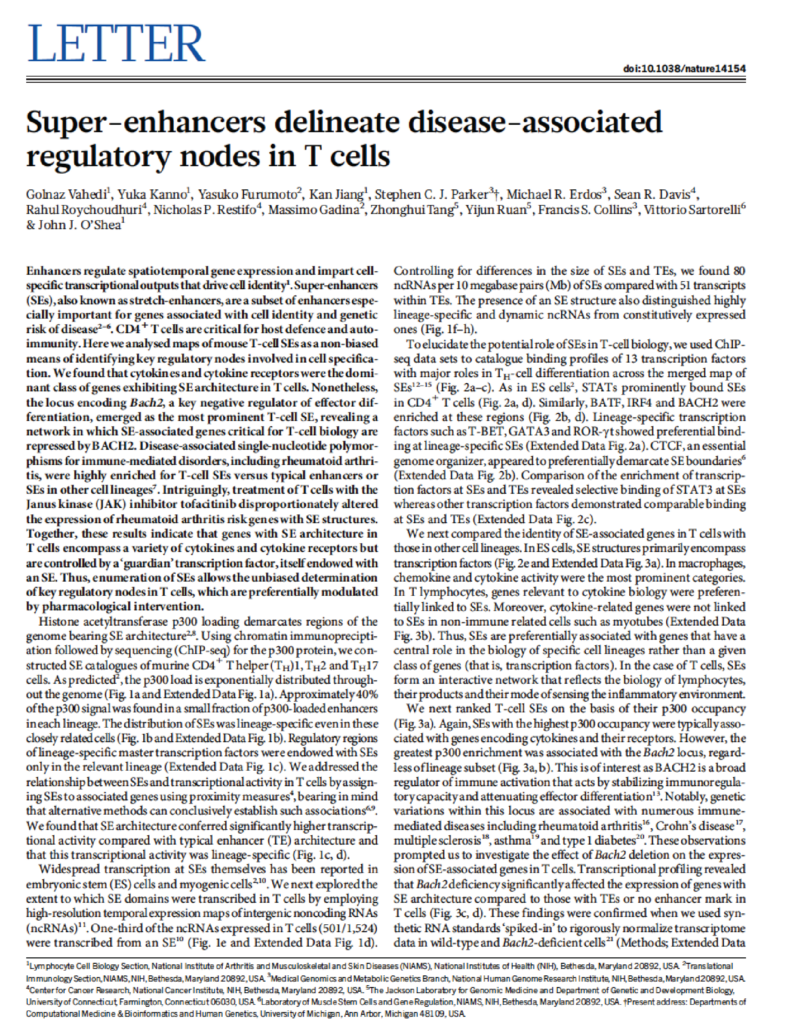Publications

Super-enhancers Delineate Disease-associated Regulatory Nodes in T cells
Vahedi, G., Kanno, Y., Furumoto, Y., Jiang, K., Parker, S. C., Erdos, M. R., Davis, S. R., Roychoudhuri, R., Restifo, N. P., Gadina, M., Tang, Z., Ruan, Y., Collins, F. S., Sartorelli, V., O'Shea, J. J.
Nature
2015
Enhancers regulate spatiotemporal gene expression and impart cell-specific transcriptional outputs that drive cell identity. Super-enhancers (SEs), also known as stretch-enhancers, are a subset of enhancers especially important for genes associated with cell identity and genetic risk of disease. CD4(+) T cells are critical for host defence and autoimmunity. Here we analysed maps of mouse T-cell SEs as a non-biased means of identifying key regulatory nodes involved in cell specification. We found that cytokines and cytokine receptors were the dominant class of genes exhibiting SE architecture in T cells. Nonetheless, the locus encoding Bach2, a key negative regulator of effector differentiation, emerged as the most prominent T-cell SE, revealing a network in which SE-associated genes critical for T-cell biology are repressed by BACH2. Disease-associated single-nucleotide polymorphisms for immune-mediated disorders, including rheumatoid arthritis, were highly enriched for T-cell SEs versus typical enhancers or SEs in other cell lineages. Intriguingly, treatment of T cells with the Janus kinase (JAK) inhibitor tofacitinib disproportionately altered the expression of rheumatoid arthritis risk genes with SE structures. Together, these results indicate that genes with SE architecture in T cells encompass a variety of cytokines and cytokine receptors but are controlled by a ‘guardian’ transcription factor, itself endowed with an SE. Thus, enumeration of SEs allows the unbiased determination of key regulatory nodes in T cells, which are preferentially modulated by pharmacological intervention.